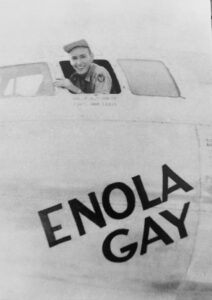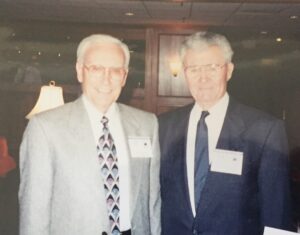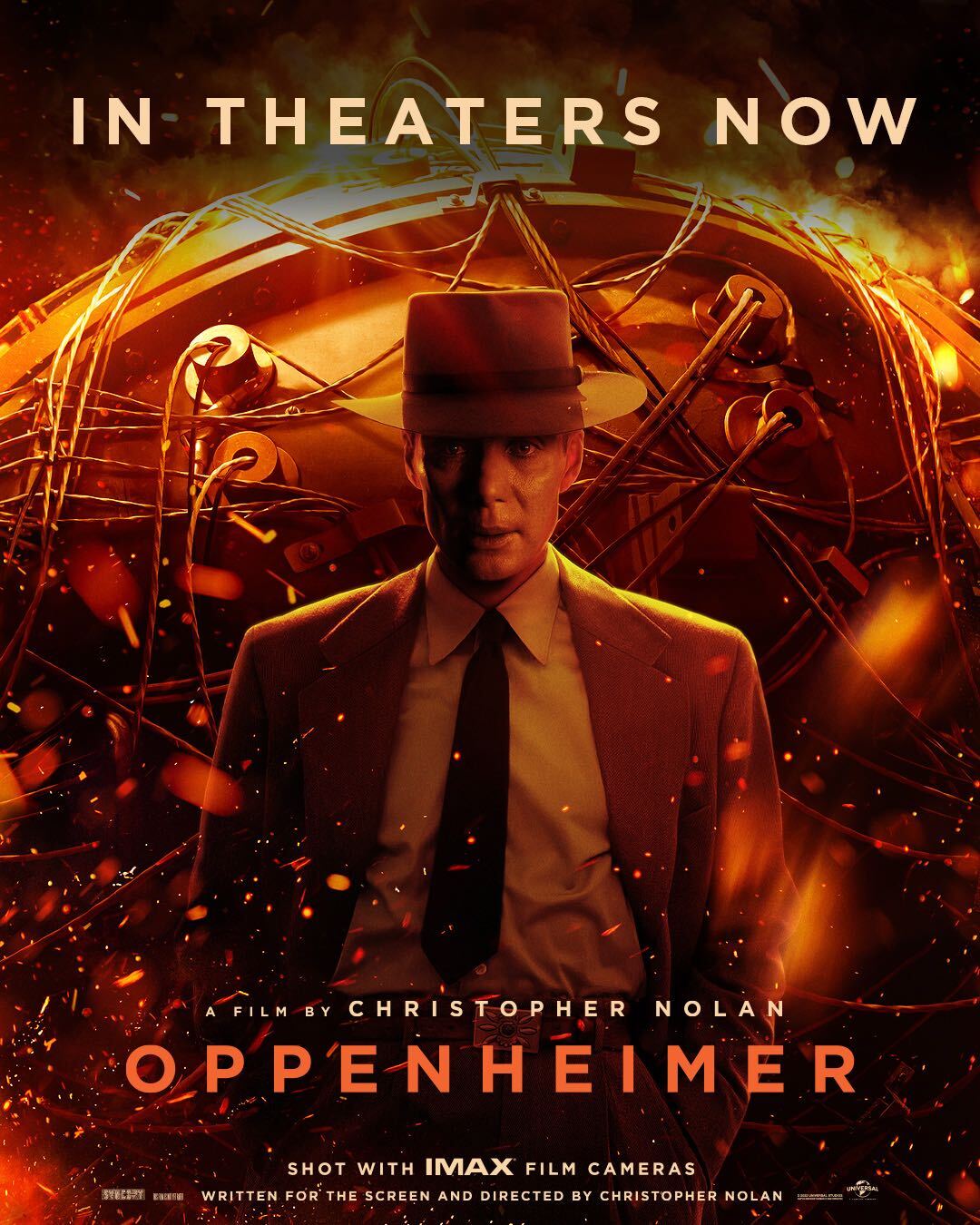Last Member of Enola Gay’s Squadron on New Oppenheimer Film
Use controls above or click here to open this Hometown Heroes podcast in a new window
Episode #797 of Hometown Heroes, airing August 5-10, 2023, marks the 78th anniversary of the dropping of the atomic bomb on Hiroshima with the perspective of the last known member of the Enola Gay’s squadron and group, reflecting both on his connection to that chapter of history, as well as the new film, Oppenheimer.

The three-hour movie depicts the life of J. Robert Oppenheimer in diverse and vivid detail, all revolving around the plot’s nucleus: the world-changing detonation of the atomic bomb over Hiroshima on August 6, 1945. Oppenheimer passed away long ago, as did the rest of the key scientists involved in the Manhattan Project. None of the crewmembers of the B-29 Enola Gay that dropped the bomb “Little Boy” 78 years ago remain in 2023, and in fact, there is only one known surviving member of the 393rd Bomb Squadron and its parent organization, the 509th Composite Group: 98-year-old Norris Jernigan of Visalia, CA.

You’ll hear Jernigan’s reaction to the film and its depiction of the chapter of history that he played a small role in as an intelligence clerk stationed on Tinian when Enola Gary and Bock’s Car flew their fateful atomic missions from that small Pacific outpost.
“I think there were a few explicit scenes that didn’t necessarily need to be in there to tell the story of Oppenheimer. He was a brilliant person,” you’ll hear Jernigan say. “I never had the privilege of meeting the man, but we knew about him, because our part of the Manhattan Project was delivery of the bomb, but nothing to do with the development of it.”

One element of the story that the new film covers extensively is the extreme time sensitivity of the race to develop atomic weapons. The Allies knew the Nazi regime had made progress, and once Germany surrendered and the focus of the war shifted to the Pacific, the urgency centered around preventing a planned November invasion of Japan that would have come with innumerable casualties on both sides.
“It was really mind-boggling how quickly they developed that thing,” you’ll hear Jernigan reflect. “When we went overseas, we didn’t know that the thing had not been brought to the point of being tested yet even.”
Jernigan has twice been to the Trinity Site in New Mexico, where scientists tested the weapon in July, 1945. He even has a piece of Trinitite – desert sand turned to glass – left behind by that explosion. He points out that the weapon tested was a plutonium bomb, while the uranium bomb dropped on Hiroshima had never been tested before it descended out of Enola Gay’s bomb bay. He has often pointed toward the statement the pilot of Enola Gay, Paul Tibbetts, crafted in response to those who questioned the necessity of the atomic bomb.
“The morality of dropping the bomb was not my business,” Tibbetts wrote. “I was given a military mission to complete and I did it to the best of my ability.”

With the recent passing of Larry DeCuir, Jernigan believes he is the last surviving member of the 509th Composite Group. With that distinction comes a responsibility.
“I feel that my responsibility is to try to keep the story alive,” you’ll hear the 98-year-old share. “I’m glad it was used, glad it’s never been used again, and it IS a horrible weapon, but it did what it was designed to do, and that was stop that war.”
The video below was recorded in 2020, when Jernigan shared his story on episode #640 of Hometown Heroes in honor of the 75th anniversary of the first atomic bomb to be used in action against the enemy:




Leave a Reply